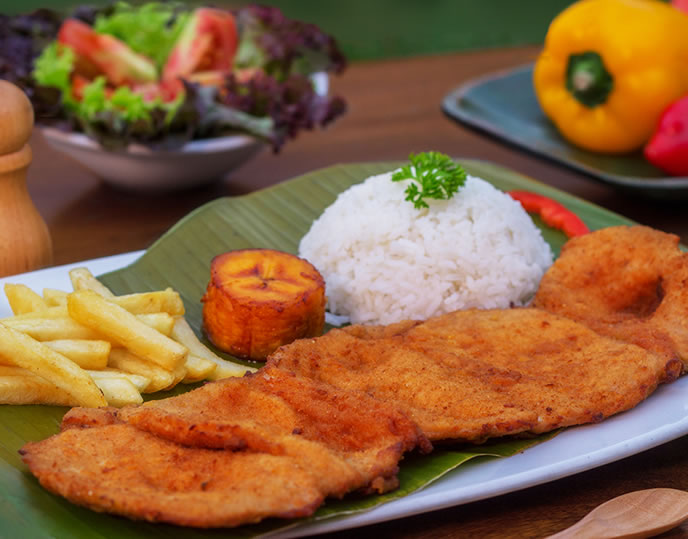|
Torta Maria Luisa
Torta Maria Luisa is a dessert found in Colombian and Salvadoran cuisine. It is a type of layer cake, similar to the English Victoria sponge Sponge cake is a light cake made with egg whites, flour and sugar, sometimes leavened with baking powder. Some sponge cakes do not contain egg yolks, like angel food cake, but most of them do. Sponge cakes, leavened with beaten eggs, originated ... cake. References Colombian cuisine Salvadoran cuisine Layer cakes {{ElSalvador-cuisine-stub ... [...More Info...] [...Related Items...] OR: [Wikipedia] [Google] [Baidu] |
Colombian Cuisine
Colombian cuisine is a compound of the culinary traditions of the six main regions within Colombia (Pacific, Amazonian, Andean, Orinoco, Caribbean, and Insular). Colombian cuisine varies regionally and is particularly influenced by Indigenous Colombian, Spanish, and African cuisines, with slight Arab influence in some regions. Furthermore, being one of the most biodiverse countries in the world, Colombia has one of the widest variety of available ingredients depending on the region. History of Colombian food Colombian food is a unique blend of indigenous and European traditions with a strong Afro-Caribbean influence. The two largest indigenous groups prior to European conquest were the Tairona, who lived along the Caribbean coast, and the Muisca, who lived in the highlands to the South. Arepas, made from ground corn, are one of the oldest cooked dishes in Colombian cuisine. It is believed that the name derives from the word for corn in the Chibcha languages. Arepas are a popul ... [...More Info...] [...Related Items...] OR: [Wikipedia] [Google] [Baidu] |
Salvadoran Cuisine
Salvadoran cuisine is a style of cooking derived from the nation of El Salvador. The indigenous foods consist of a mix of Native American cuisine from groups such as the Lenca, Pipil, Maya Poqomam, Maya Chʼortiʼ, Alaguilac, Mixe, and Cacaopera peoples. Many of the dishes are made with maize (corn). There is also heavy use of pork and seafood. Eurasian ingredients were incorporated after the Spanish conquest. El Salvador's most notable dish is the ''pupusa'', a thick handmade corn flour or rice flour flatbread stuffed with cheese, ''chicharrón'' (cooked pork meat ground to a paste consistency), refried beans or ''loroco'' (a vine flower bud native to Central America). There are also vegetarian options, often with ayote (a type of squash) or garlic. Some restaurants even offer pupusas stuffed with shrimp or spinach which are served with ''salsa roja'', a cooked tomato sauce, often served with ''curtido''. ''Pollo encebollado'' is another popular Salvadoran dish that contains c ... [...More Info...] [...Related Items...] OR: [Wikipedia] [Google] [Baidu] |
Layer Cake
A layer cake (US English) or sandwich cake (UK English) is a cake consisting of multiple stacked sheets of cake, held together by frosting or another type of filling, such as jam or other preserves. Most cake recipes can be adapted for layer cakes; butter cakes and sponge cakes are common choices. Frequently, the cake is covered with icing, but sometimes, the sides are left undecorated, so that the filling and the number of layers are visible. Popular flavor combinations include the German chocolate cake, red velvet cake, Black Forest cake, and carrot cake with cream cheese icing. Many wedding cakes are decorated layer cakes. In the mid-19th century, modern cakes were first described in English. Maria Parloa's ''Appledore Cook Book'', published in Boston in 1872, contained one of the first layer cake recipes. Another early recipe for layer cake was published in ''Cassell's New Universal Cookery Book'', published in London in 1894. Older forms An older form of layer cak ... [...More Info...] [...Related Items...] OR: [Wikipedia] [Google] [Baidu] |
Victoria Sponge
Sponge cake is a light cake made with egg whites, flour and sugar, sometimes leavened with baking powder. Some sponge cakes do not contain egg yolks, like angel food cake, but most of them do. Sponge cakes, leavened with beaten eggs, originated during the Renaissance, possibly in Spain.Castella, Krystina (2010). ''A World of Cake: 150 Recipes for Sweet Traditions From Cultures Around the World'', pp. 6–7. . The sponge cake is thought to be one of the first of the non-yeasted cakes, and the earliest attested sponge cake recipe in English is found in a book by the English poet Gervase Markham, '' The English Huswife, Containing the Inward and Outward Virtues Which Ought to Be in a Complete Woman'' (1615). Still, the cake was much more like a cracker: thin and crispy. Sponge cakes became the cake recognized today when bakers started using beaten eggs as a rising agent in the mid-18th century. The Victorian creation of baking powder by English food manufacturer Alfred Bird in 1843 a ... [...More Info...] [...Related Items...] OR: [Wikipedia] [Google] [Baidu] |



